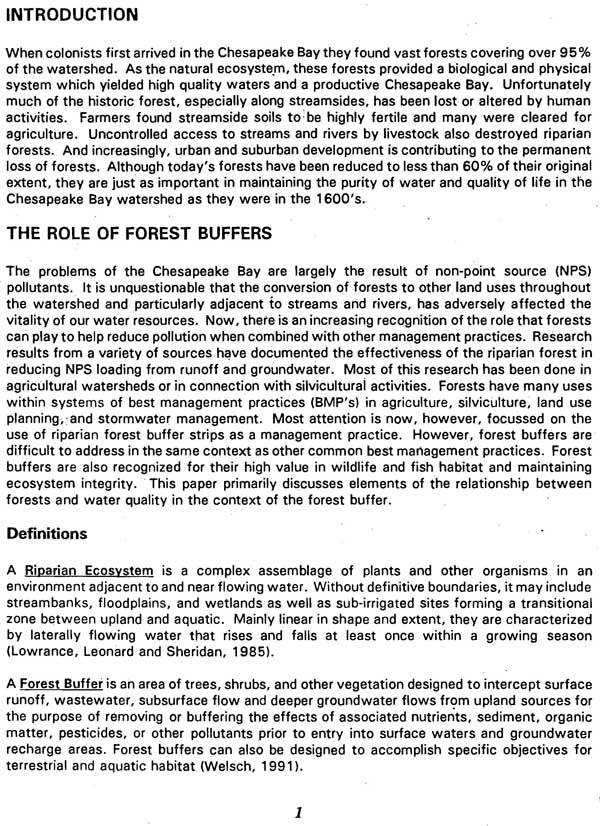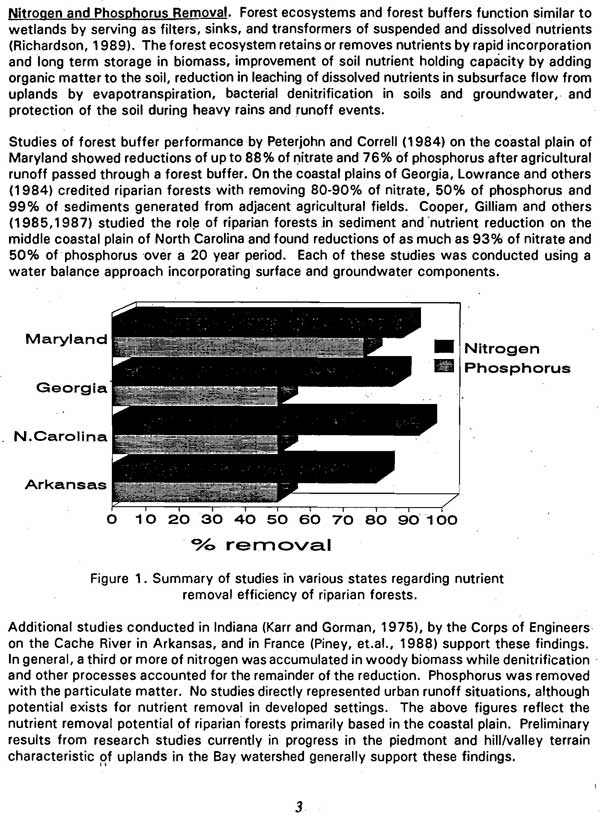This 1993 research paper (PDF, 156KB) underscores the value of the North Street woods for water management and pollution control around Millyard Brook. Kohl Construction proposes to cut down many mature trees near the Millyard Brook wetlands to make way for a condo project.
Highlights from the paper:
“A mature forest can absorb as much as 14 times more water than an equivalent area of grass (NCASI, 1992)… Trees aggressively convert nutrients into biomass… Their deep spreading root systems resist erosion, stimulate biological and chemical soil processes, and draw water and nutrients from deep within the soil profile. Trees produce high amounts of carbon needed as an energy source for bacteria involved in the denitrification process… With buffers of adequate size, 50% to 100% of sediment and its adsorbed nutrients has been shown to settle out in the streamside forest as the speed of runoff is reduced by the many obstructions encountered… The shade provided by a riparian forest buffer moderates stream temperatures and levels of dissolved oxygen. These factors are critical for fisheries and submerged aquatic vegetation, but also have water quality implications. Temperature increases the rate at which nutrients attached to suspended solids are converted to readily available (soluble) forms. As stream temperature increases above 60° F significant increases in phosphorus release from sediments occurs (Karr and Schlosser, 1978). In this way, the loss of forest shade may exaggerate nonpoint pollutant effects by reducing the streams ability to assimilate organic wastes and inducing algae blooms and low oxygen levels… Human habitat is also important. Forest buffers in urban areas provide a unique linkage between people and their environment… Forests should be retained as greenbelts along streams and drainageways during development… Urban forest buffers filter runoff, air pollutants, and noise. Forests cool the air and provide corridors for movement of birds and other wildlife. In urban areas, these buffers may provide the only available habitat for many organisms.”
Here is the complete paper:








See also:
Our Ad in Today’s Gazette: A Review of Our Objections to the Kohl Condo Proposal
Planning Board Gives Initial Critique of Kohl Condo Proposal: Jan 22 Video
Gazette Reports on January 22 Kohl Condo Hearings; Pictures of the Latest Proposal; Conservation Staff Report; HYLA Critique
Here is an analysis of Kohl’s proposal prepared by Dr. Bryan S. Windmiller of HYLA Ecological Services for the North Street Neighborhood Association:
I have prepared the following brief commentary on the
Notice of Intent for construction of the North Street Condominiums
development, proposed by Tofino Associates along North Street in
Northampton, Massachusetts. I submit these comments to you with the
intention that they be distributed to the Northampton Conservation
Commission and included in the record of commentary of the Notice of
Intent. My comments pertain to the latest revised plans for the
project (Berkshire Design Group, Inc., Jan. 16, 2009).I contend
that the extensive buffer zone alterations proposed by Tofino
Associates to a largely forested buffer zone adjacent to the Bordering
Vegetated Wetlands along Millyard Brook, will inevitably result in the
physical, chemical, and biological alteration of these wetlands. The
proponent desires to work very close to the edge of wetlands, with
intrusions apparently as close as 12 feet from the wetland edge.
Cumulatively, by the proponents reckoning, the construction would
directly alter 6,325 sq. ft. of buffer zone between 35 and 10 feet from
the wetland edge. The project would result in the destruction of the
great majority of natural vegetation, most of currently mature woods.Furthermore,
in an effort to meet the stringent conditions set under the newly
revised Northampton Wetlands Protection Ordinance regarding any
proposal to alter buffer zone within 35 feet of a wetland resource
area, Tofino Associates proposes to disturb an additional several
thousand square feet of buffer zone between 10 and 35 feet from the
wetlands in the course of creating tiny “wetland replication” areas.
Further, the proponent wants to directly disturb a significant area of
forested bordering vegetated wetland through an “invasive species
removal and native plantings” scheme. These actions are presumably
meant to be “extraordinary” mitigation to compensate for the
unprecedented buffer zone intrusions that are proposed. I argue here
that this logic is ecologically fallacious: the applicant proposes to
mitigate the impacts of buffer zone disturbance by disturbing even more
area of inner buffer zone and forested wetland itself. This mitigation
effort will, in fact, only worsen the impacts to the wetlands bordering
Millyard Brook.1. The Proposed Buffer Zone Alterations Will Inevitably Alter the Adjacent Wetland Resource Areas in Many Ways
The
Massachusetts Wetland Protection Act seeks to prevent alterations to
wetland resource areas within the Commonwealth. In doing so, the
regulations use a very stringent definition of the word “alter” (310
CMR 10.04):Alter means to change the condition of any Area Subject to Protection Under M.G.L. c. 131,
§ 40. Examples of alterations include, but are not limited to, the following:
(a)
the changing of pre-existing drainage characteristics, flushing
characteristics, salinity distribution, sedimentation patterns, flow
patterns and flood retention areas;(b) the lowering of the water level or water table;
(c) the destruction of vegetation;
(d)
the changing of water temperature, biochemical oxygen demand (BOD), and
other physical, biological or chemical characteristics of the receiving
water.The idea that the applicant can cut down mature
woods to within 12 feet of the wetland edge and have no effect on the
physical, chemical, and biological characteristics of wetlands a mere
long-jump away is completely untenable. There is an abundance of
scientific evidence demonstrating that the effects of removing natural
vegetation, particularly forest cover, extend far into the remaining
woodland from the newly-created edge. The following is a sampling of
known “edge effects” that alter ecological communities much beyond
12-feet from a disturbed area (e.g. an area of construction activities).Altered Physical Conditions:
The shade of a closed-canopy forest produces very different physical
conditions at ground level than experienced in adjacent open areas.
Open areas are windier and drier at ground level, have sharper
temperature fluctuations, and much deeper frost lines than adjacent
woods. Rain strikes the ground with greater erosive force in open
areas. These differences do not end abruptly at the forest edge but
are propagated well into the woods. Light levels near a forest edge
return to normal (i.e. similar to forest interior) in only a few meters
from the edge (e.g. <20 feet), but wind patterns, turbulence, and
reduced humidity typically extend from 0.5 to several times the average
height of canopy trees (e.g. >>30 feet into the North Street
Woods, Richard T.T. Forman, Land Mosaics, 1995. Pp. 88-89).
These altered physical conditions increase the penetration of invasive
plant seeds into the forest, and stress forest interior adapted native
forest floor plants.Increased Tree Mortality Near the New Forest Edge:
Changes in wind speed and turbulence near a newly-created forest edge
increase the likelihood of tree mortality at some distance from the
edge. Wind-throw of trees becomes more common, with effects continuing
many yards into the adjacent forest. Quoting from an ecology textbook
(R.J. Whittaker and J.M. Fernandez-Palacios. Island Biogeography, Ecology, Evolution, and Conservation. 2001. P. 208):“We can say, however, that at the edge of a newly-fragmented woodland patch, increased desiccation, wind-damage (to trees),
and tree-throw can each be significant… Wind-throw of dominant trees
can result in changes in the vegetation structure, and allow
recruitment of earlier succesional species (e.g. many invasive weedy species).” (Italics are mine.)In
addition, the construction process itself is likely to damage trees
near the new forest edge as roots are dug up and the soil around them
compacted by machinery. In the proposed Tofino Associates development,
the roots of the mature trees are likely to extend 25 feet or more from
the trunks of the trees. Trees may thus be readily damaged or killed
by construction even though their trunks are yards away. If these
damaged trees fall, they propagate changes in the woods (light-levels,
humidity, penetration by weedy seeds, etc.) further still into the
adjacent wetlands……the intended removal of Norway spruce (Picea abies), a
non-native species occurring in a dense mature stand in the Millyard
Brook wetlands can, in no way be construed as an improvement. Although
these trees are not native, they provide complex habitat structure for
wildlife, help bind the soil that enhances the erosion control and
pollution attenuation functions of the wetlands, and moderate climate
and humidity levels in the wetlands. The removal of these trees will
cause major direct impacts to the wetlands and adjacent buffer zone and
will greatly facilitate the establishment of truly invasive exotic
species. The tree removal will also greatly reduce and simplify
existing wildlife habitat. The resident birds, mammals, and
invertebrates care not one whit that these mature trees are originally
native to Europe; they exist and provide excellent habitat structure…
Japanese Knotweed and Multiflora Rose: Is Herbicide the Answer?
In an effort to earn ‘extraordinary mitigation’ points and justify
close encroachment to the wetlands off North Street, Kohl Construction proposes to apply herbicide
in an effort to eradicate two invasive species on its property:
Japanese knotweed and multiflora rose…
First up is this article on Japanese knotweed by R.H. Shaw and L.A. Seiger (2002):
…To be effective, Japanese knotweed control probably will need to be undertaken on a watershed-wide basis…
Once established, F. japonica is very difficult to eradicate and removal efforts may have further adverse impacts on the soil or other plants…
In areas where F. japonica has been introduced, it is found primarily in moist, unshaded habitats… Fallopia japonica
requires high light environments and competes effectively for light in
such situations. It is found primarily in open sites, and its growth
and abundance are depressed in shady sites (Beerling, 1991b; Seiger,
1993). Consequently, it is unable to invade forest (Beerling, 1991b,
Seiger, 1993)…
Even if Kohl tries to eradicate knotweed from its entire
parcel, this is far short of a “watershed-wide basis”. And while Bruce
Young disputes the notion that removal of invasives can disturb the
wetland and its buffer zone, just such a risk is mentioned by Shaw and
Seiger. We also note that Kohl’s proposed condo development calls for
extensive tree-cutting. The resulting increase in light penetration on
the property may well facilitate the spread of Japanese knotweed.
Invasive Plant Atlas of New England: Japanese Knotweed
Polygonum cuspidatum
can be found in a variety of habitats. It thrives in riparian areas and
wetlands, but can be found along roadsides and other disturbed areas.
It prefers full sunlight, but can tolerate moderate shade. This plant
is tolerant of high temperatures, dry soil and salt.